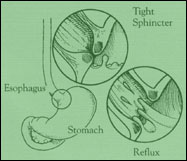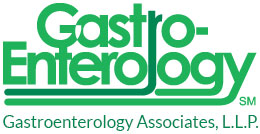Everyone occasionally has heartburn. This occurs when stomach acid flows backward into the esophagus, the food pipe that carries food to the stomach. People usually experience heartburn after meals as a burning sensation or pain behind the breastbone. Often, regurgitation of food and bitter-tasting stomach acid accompanies heartburn. Antacids or milk temporarily relieves heartburn for most people.
Why Does Heartburn Occur? To understand heartburn, let's look at the body's anatomy. The esophagus carries food and
To understand heartburn, let's look at the body's anatomy. The esophagus carries food and
liquid to the stomach. A sphincter, or specialized muscle, is located at the end of the esophagus. Known as the lower esophageal sphincter (LES), this muscle contracts much the same as the anus does. The sphincter should maintain a certain pressure to keep the end of the esophagus closed, so that stomach juices are not admitted. The LES muscle should only open when food is passed into the stomach.
However, the LES muscle does not always work perfectly. It can be easily overcome by a number of factors, the most common being eating a large meal. Along with swallowed air, a large meal causes pressure in the stomach to rise, thereby overpowering the LES muscle. Other factors that reduce the LES pressure and allow reflux are:
|
Is Heartburn Common and Serious?
Heartburn and reflux are extremely common, with 10 percent of the population experiencing them daily. Twenty-five percent of pregnant women have heartburn. Heartburn is common, and rarely life threatening, however, severe cases can result in injury to the lower esophagus which requires treatment.
